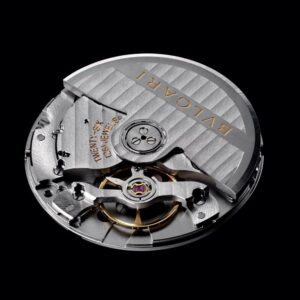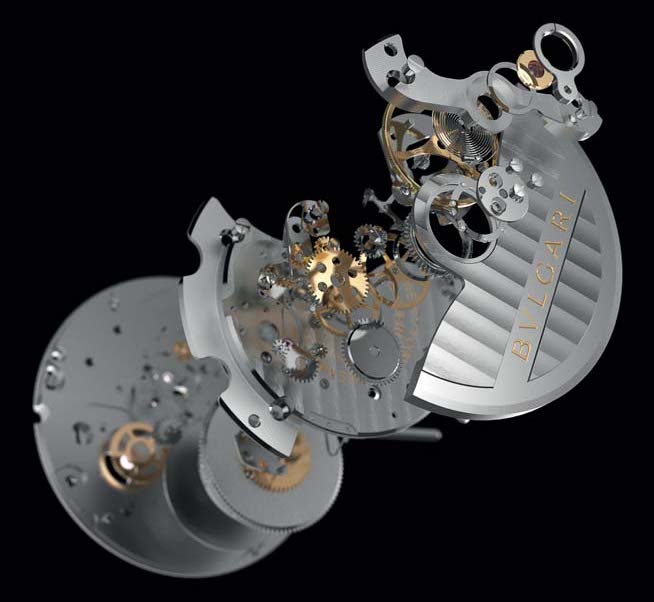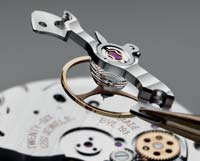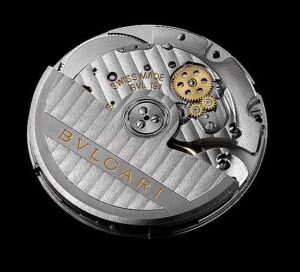 |
Brand: | Bulgari | 




|
|---|---|---|---|
| Family: |
Unknown
|
||
| Height: | 3.80 mm | ||
| Jewels: | 26, 27 | ||
| Reserve: | 42 hours | ||
| Frequency: | 28,800 A/h | ||
| Winding: | Automatic, Central Rotor Automatic Winding | ||
| Diameter: | 25.60 mm (11.5 ligne) | ||
| © Bulgari | Complications: | Date, Hacking Seconds, Instant Date Change | |
| Hands: | Central Hour Hand, Central Minute Hand, Central Seconds Hand, Date Window at 3:00 | ||
| Distinguishing Technical Characteristics | |||||||||||
|---|---|---|---|---|---|---|---|---|---|---|---|
 Central-Rotor Automatic  Balance Bridge |
|||||||||||
| Production: 2013 – Current | |||||||||||
| 1910s | 1920s | 1930s | 1940s | 1950s | 1960s | 1970s | 1980s | 1990s | 2000s | 2010s | 2020s |
Cal. BVL 191 is an automatic movement with date and central seconds from Bulgari. The company refers to it as “Solotempo” in marketing materials, noting it is “a completely in-house caliber.” It uses ceramic ball bearings for the central automatic winding rotor and features an instant date change mechanism and hacking seconds. It was introduced in 2013 and remains in production as of 2020.


Cal. BVL 191 is typically listed with 26 jewels in earlier catalogs, though current models show “Twenty Seven Jewels” printed on the bridges. Bulgari told a Watchuseek reader that the original movement (known as “BVL 191 301”) with 26 jewels was “optimized” in 2017 with an added jewel and is known in-house as “BVL 191 302.” Some sources list the diameter at 26.20 mm, but the official measurement is 25.60 mm. The movement is named for the 191 components used to create it.
Bulgari launched Cal. BVL 193 in 2012, one year before the similarly-sized and more-common Cal. BVL 191. Although both are 11.5 ligne in diameter, and both are similarly-thick central-rotor automatics, they appear to share very little architecturally. The earlier BVL 193 features double-barrel power and yet just 50 hours power reserve, eight more than the single-barrel BVL 191. The balance on Cal. BVL 193 is at 8:00 (with the stem at 9:00) and uses a clockwise cock, while the balance on Cal. BVL 191 is at 6:00 and uses a bridge. Overall, the earlier movement appears higher in specification and is somewhat more costly, but its younger brother might be more desirable. The differences are easy to spot at a glance due to the balance bridge.


It appears that the earlier double-barrel Cal. BVL 193 is in fact based on Vaucher Manufacture Fleurier’s Cal. VMF 3022, a movement also used by Hermes, Parmigiani Fleurier, and others. Cal. BVL 191 is an in-house movement and is used on slightly lower-priced watch models.
Bulgari uses the “Solotempo” movement in their entry-level Octo Roma watch line.
Images are taken from official publications and are used here for commentary and educational purposes. Copyright is held by the original owner as noted.